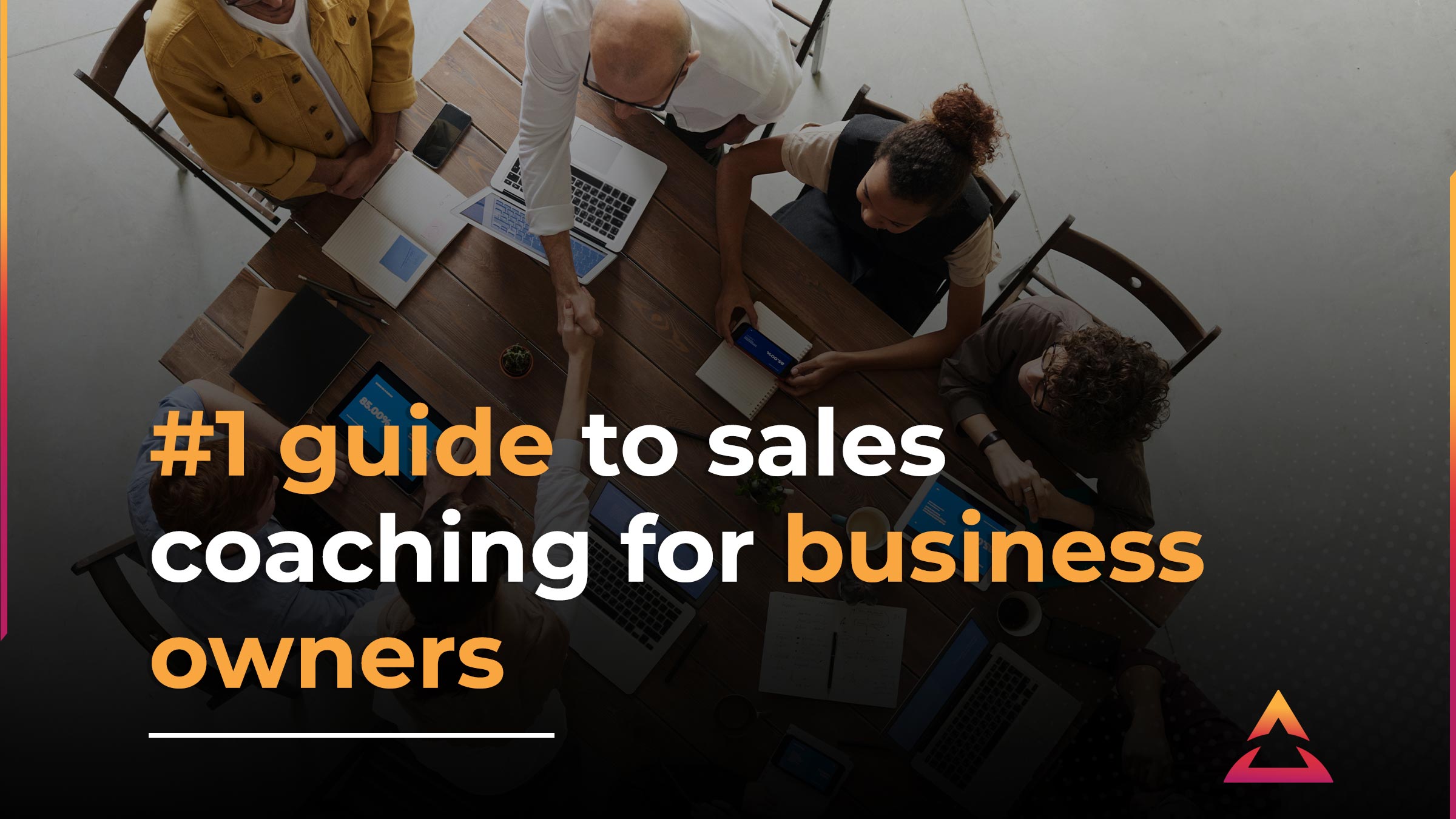
When we think of sales, we usually think of a business selling to a customer or many customers. However, the best kinds of sales actually occur between businesses — B2B sales.
Where B2C (Business to Customer) may have smaller quantities once or twice a year per customer, B2B (Business to Business) sales can include large amounts of stock or a higher priced service, and often with repeated transactions. There is often more money to be from a business selling to another business.
Let Australia's leading training and business coaching provider, The Entourage, help you build a B2B sales funnel so you can grow your business. We’ve enlisted the expertise from one of our own Senior Accelerate Success Business Coaches, Jesse Ravenscroft, to give you some pro tips below.
Jesse was in a business development role with Salesforce before becoming one of our brilliant business coaches in 2020. He has been with us for nearly 2 years and has helped hundreds of successful businesses in our programs.
What are common B2B sales techniques?
There are some tried and true methods for conducting B2B sales. We'll give you the five most well-known methods below.
Solution selling
You need to understand your potential clients really well for this method. You engage with them and offer tailored solutions to their problems, not standard one-size-fits-all products and services. You make the life of your client easier by engaging with you and providing the solution to their problem.
Be positive about the results, and upbeat in your sales pitch. If you can make life easier for them ongoing, you’ll have a loyal customer for a long time.
The challenger sale
With this method, you’re going to challenge your potential client. Make them think about their industry, their business, and how they can do better. Teach them how they can make a difference, and how they can improve their bottom line.
You'll likely tailor your services for this client to help them achieve victory with their challenge. Then you celebrate their success, before challenging them again.
Account-based sales
This sales technique focuses on high-end clients, your premium businesses. You provide end-to-end sales and after-sales support, often with one or two contacts within your organisation running the show.
This style of sales process is aimed at growing your pool of high-value clients. These clients can give you a powerful income stream for a long time. You can create very loyal customers and, in turn, have some good referral business through them.
Value selling
You are providing value to your clients through measurable returns on their investment. You provide this value through your service or your products, or how you can do the outsourced tasks to free your client up so they can focus on what's important to them.
You push the value to a client, not how much it costs. If done right, customers won't care about the price, only the value you give.
An excellent lever for this is time. You can save so much time by doing x, y and z. How much would that time usually cost you?
The Sandler selling system
Created in 1967 by David Sandler, this method focus on human psychology. It frames the relationship between buyer and seller, your clients and you. You become more than a seller of goods. You become the expert to whom they come to in times of need. Together, you and the client will build up their business to great heights. You will be on the journey with them.
There are three stages to this system:
- Build the relationship
- Qualify the opportunity
- Close the deal
What does a good B2B sales process look like?
How do you go about running a successful B2B sales campaign?
1. Lead generation
Lead generation is where you find qualified opportunities for business. Not everybody out there is a potential client. You can market to everybody, but you can’t sell to everybody. You need to know who your target audience is and focus on them.
It can take time to foster and build relationships with lead generation, and some people may be so keen to sell that they think everyone is a lead. This can waste time during the follow-up call.
When done well, the potential client will remember you and will be open to a conversation about how your business can help theirs.
An effective B2B lead generation strategy ensures you're focusing on the right target audience and nurturing potential clients. Education and practice will help you find the best solutions that will get you more clients than ever before!
Pro tip
Segmenting your potential customers by industry, persona and common trends, once you have built your list, can help you during the sales process. LinkedIn Navigator is very useful in doing this. If you’re still stretched for time, outsourcing this task to a Virtual Assistant to create qualified meetings will lessen the energy you deliver through the sales process.
2. The pitch
The pitch to your pending client is not the whole story. It is a brief version, with the highlights, showing your client how you will help them, support them and give them big wins. Don’t push too hard, and don't come across as desperate. The finer details can be covered in a meeting at a not-too-later date (you don’t want the client to cool down on the proposal).
Pro tip
Listening and understanding is absolutely key here. There’s a mutual confidence built in this stage that there is a genuine need and fit for a solution. It should feel like problem-solving and education all rolled into one.
3. The close
Closing the deal does not mean your work is done, not by a long shot. If you have come to an agreement to take this relationship to the next level, then arrange a time to go over the finer details. Make it soon, so the idea and energy is still hot in their minds. If you choose to meet in a month or so, by then, they could have cooled down and changed their mind.
If the client is not open to your pitch, and the deal is not going to go through, shake their hand, thank them for their time and assure them you will be there to help and support them if they need it. No need to burn bridges.
Pro tip
By the time you close, there should be enough of a conversation to create a clear gap between the current state and the future state for your client’s business. You will have addressed them by painting a road forward practically and clearly. Once this is achieved, depending on the project - reiterate that this is a ‘now’ conversation and not a later one. Let’s get started.
4. Negotiation
Enter the negotiations knowing what you want and have a good idea of what the final deal will be. Allow for some wiggle room, which is why it’s called a negotiation, and find that ground where everyone is happy.
You want to make a deal both parties are happy with. Know where your line is, and be ready to be firm. What may have been a polite conversation while farming the lead may get tricky when there is money on the line.
Pro tip
With solutions-based selling, the aim is to move the prospect to emotional benefits, not just product outcomes, showing a mutual benefit. During negotiations, you need to clearly address all objections.
5. The follow-up
This is a vital step in the sales process and can cement the relationship. If they sign up with you, the follow-up helps to support them. It is a chance for feedback to adjust how you service your client. Schedule regular catch-ups, quarterly meetings and more. Provide excellent after-sales service.
If they don't sign up, then following up can keep you in the forefront of their mind, so when they are ready to buy, it's you they think of. Don’t push too hard on the follow-up if they don’t sign with you. This will aggravate them, and turn them off your services.
Pro tip
Have a clear strategy beyond ‘just follow up’. There should always be a next meeting scheduled and an agenda for that meeting. Once you’re in that meeting, it’s important to regain the previous momentum, and re-ignite the fire. Summarise the previous conversation and move to close and potentially lead to referral business.
Things you shouldn’t do in your sales process
Do it right and your B2B sales process will land you many clients, who will rave about you and potentially bring in referral business. However, if you drop the ball during the sales process, a lot of work and preparation can be lost.
Here are some things NOT to do during a B2B sales pitch.
1. Asking the wrong questions in a lead call
This shows a lack of research and understanding of your client. You need to discover what your lead wants and what problems they have that you can help them solve. If you’re asking the wrong questions, you will quickly lose interest, and you won’t get the deal.
2. Doing lead generation to the wrong audience
If you don't know who your target audience is, then you’ll be wasting time and energy with people who were never going to buy your product anyway. Before you start your lead generation process, research, who may want to buy your product, and then you speak to those people only.
3. Overcomplicating the sales process
The easier you can make it for someone to understand your business and purchase from you, the quicker you can have them signed up and ready to go.
If there are many steps in the process, have documentation ready, or offer a training session for free.
4. Creating too many steps in signing on
Much the same as step 3, you don’t want to overcomplicate things. The harder it is for someone to buy, or to sign up for your products or services, the more likely it is for them to back out.
5. Not following up with old clients/leads lost
Just because someone doesn't sign up with you now does not mean they’re not going to be ready at a future date. If you don't check back with them in a few months, it could be a potential lead lost for good.
Do you want some help with your B2B sales funnel? Need to work on your pitch, or closing the deal?
The Entourage has business coaching and training programs available for business owners across Australia. Want to uncover what areas you might need help with and discover your best steps to building a strong B2B business? Jump on a free business coaching session with The Entourage today to start your growth journey with us.
Related Posts
Join the movement.
Your Entourage journey starts here. Join Australia's largest community of over 500,000 business owners and entrepreneurs, and receive instant access to exclusive content and updates delivered straight to your inbox.




